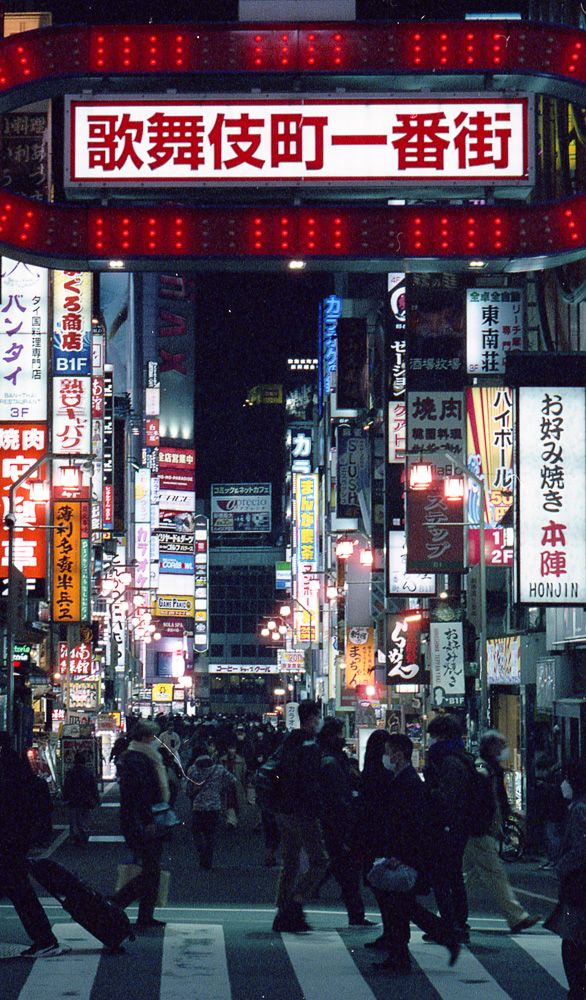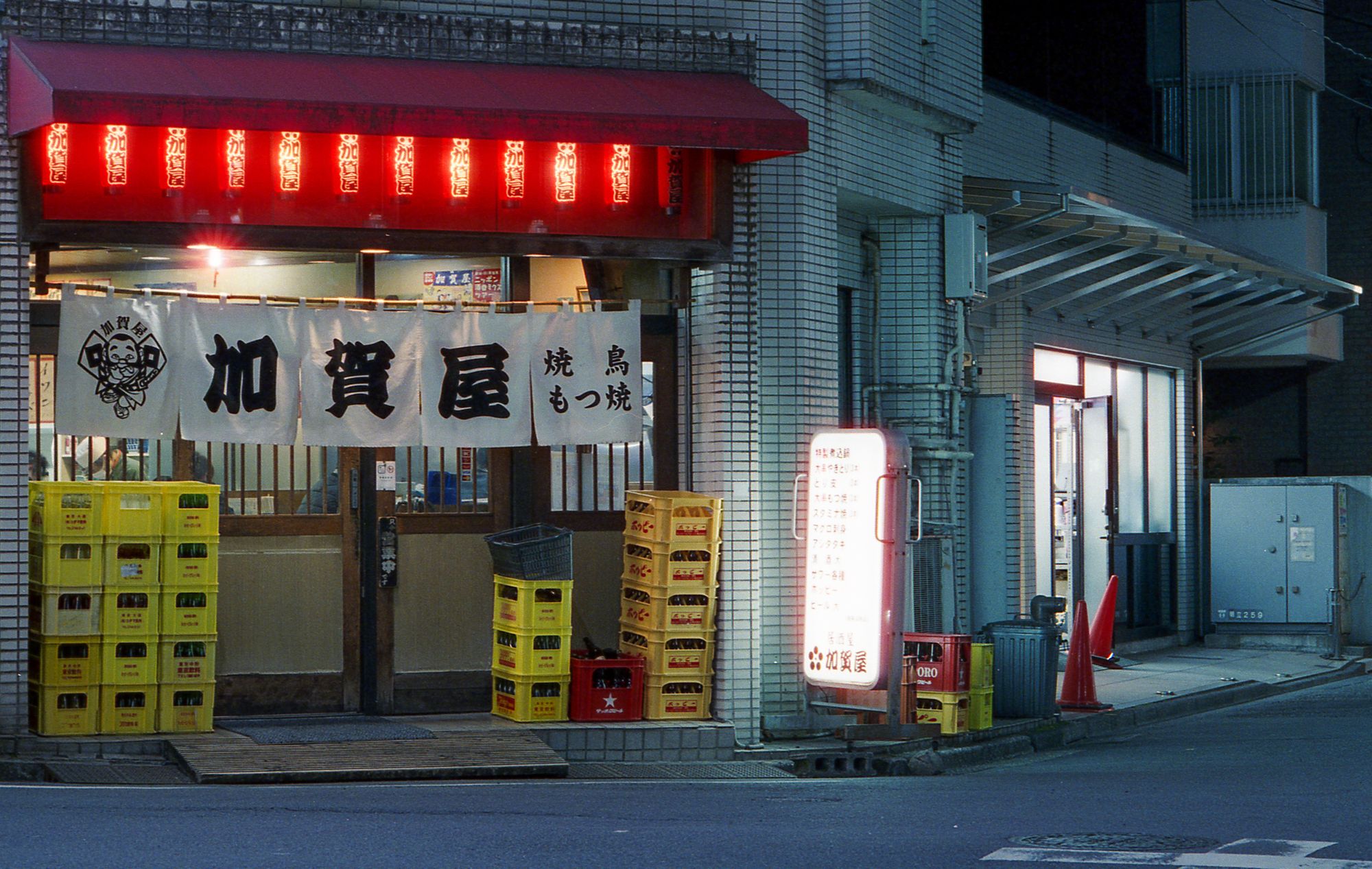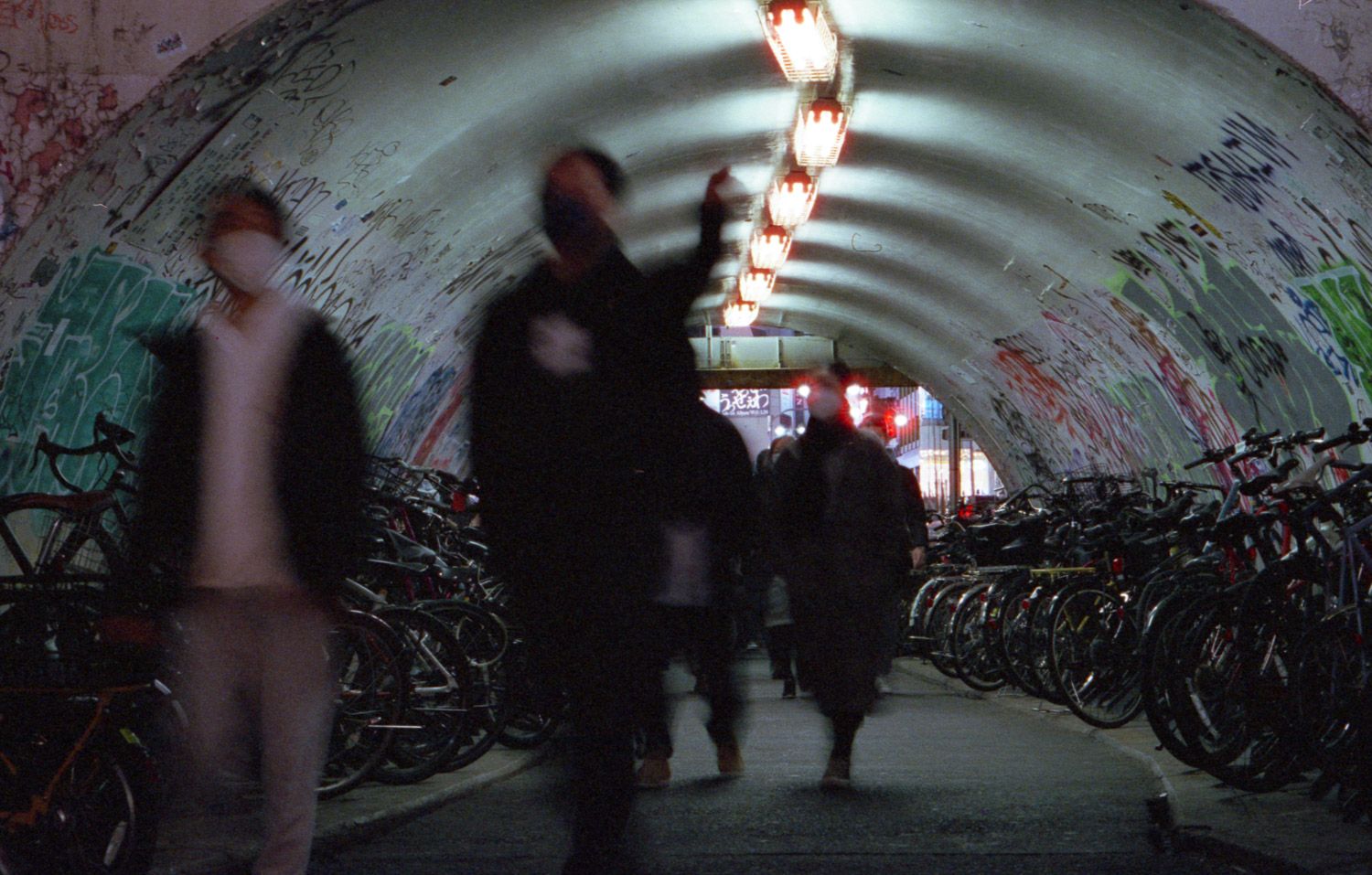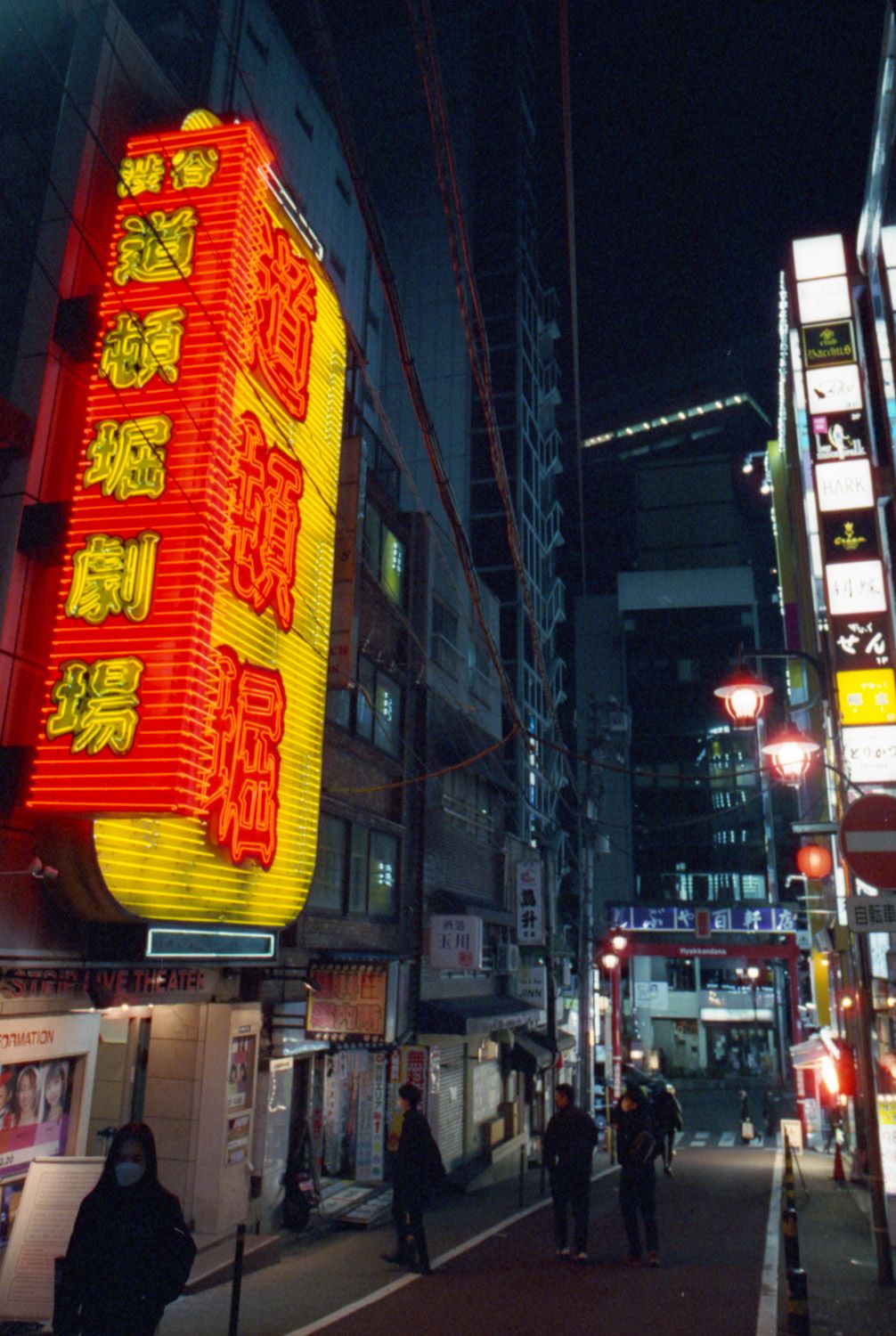Nightly Tokyo on film
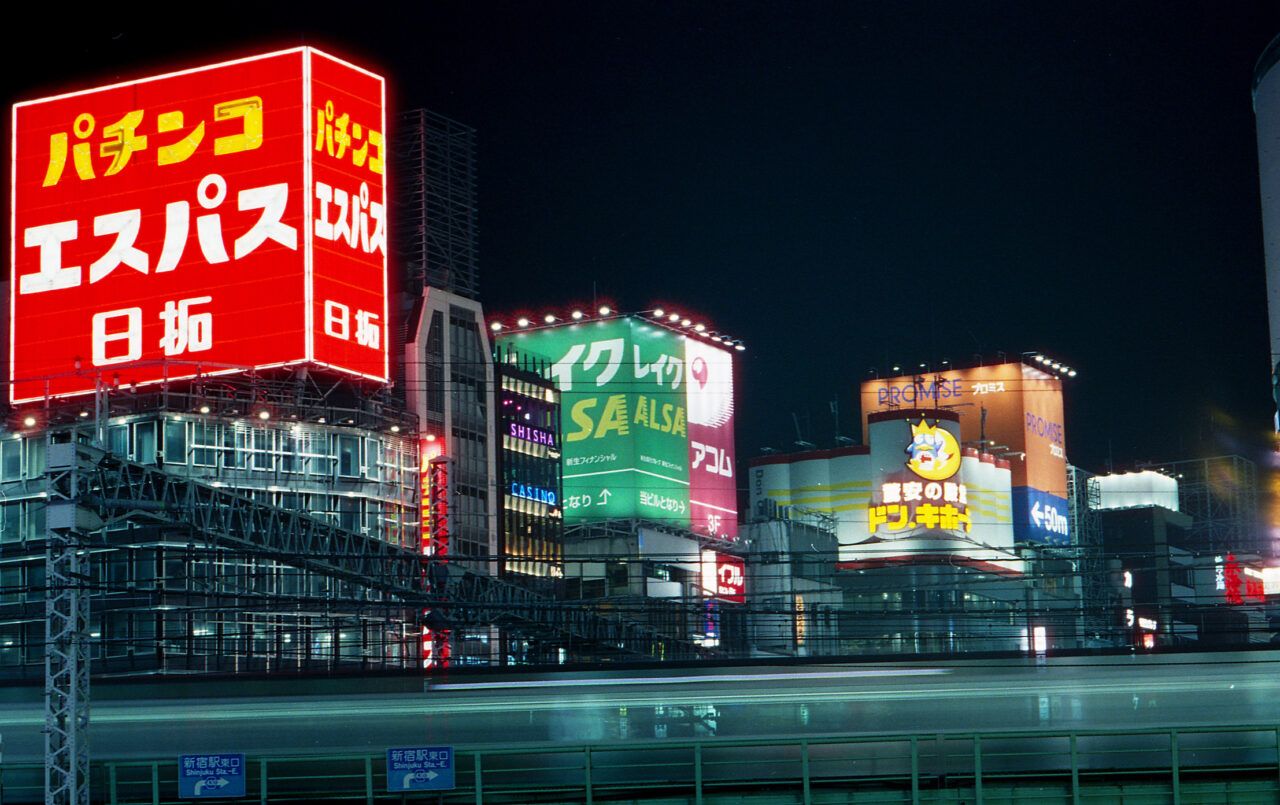
Walking the streets of Shinjuku or Shibuya these days, you can't help but notice how different this city feels following the lift of most pandemic restrictions in Japan and the country's re-opening to tourists in October 2022. These spots are proper crowded again – full with lost tourists, tipsy salary men, flashy otakus, and other odd birds. This is not to say these places have ever been truly empty, but they appear to be much more lively now than they were only half a year ago.
At the same time, it feels like many day-to-day interactions are much more friendly (yes, even in Tokyo!). Or rather, there are more opportunities for casual, friendly interactions to happen, now that Japan has moved on from its very cautious guidance on mask wearing. Incredible the difference it makes if you can see people's smile every once in a while! All that I'm saying is: I've missed you people out there. It is good to see you.
My re-discovery of downtown made me think back to some nightly photo walks I did in 2022, pre re-opening, in the Ebisu-Shibuya-Shinjuku area. Because exposure times tend to be too long for shooting hand-held at night, I would even carry around a tripod. On one of these evening walks, I tried out a film stock that has gathered quite some attention online in recent years: CineStill 800t. For those unfamiliar, the "t" in its name stands for Tungsten. Similar to old motion picture film, this one is tungsten balanced, meaning that it is optimized for lighting situations primarily using tungsten light sources with quite a low color temperature. However, what CineStill 800t may be best known for is the way that it renders these light sources (particularly fluorescent lights). On the final image, they produce a very pronounced outer glow giving the photos a cinematic, almost eery look. That is why you see a lot of photos of nightly street scenes and neon signs being shot with it. So, what better place to take it for a spin than downtown Tokyo?
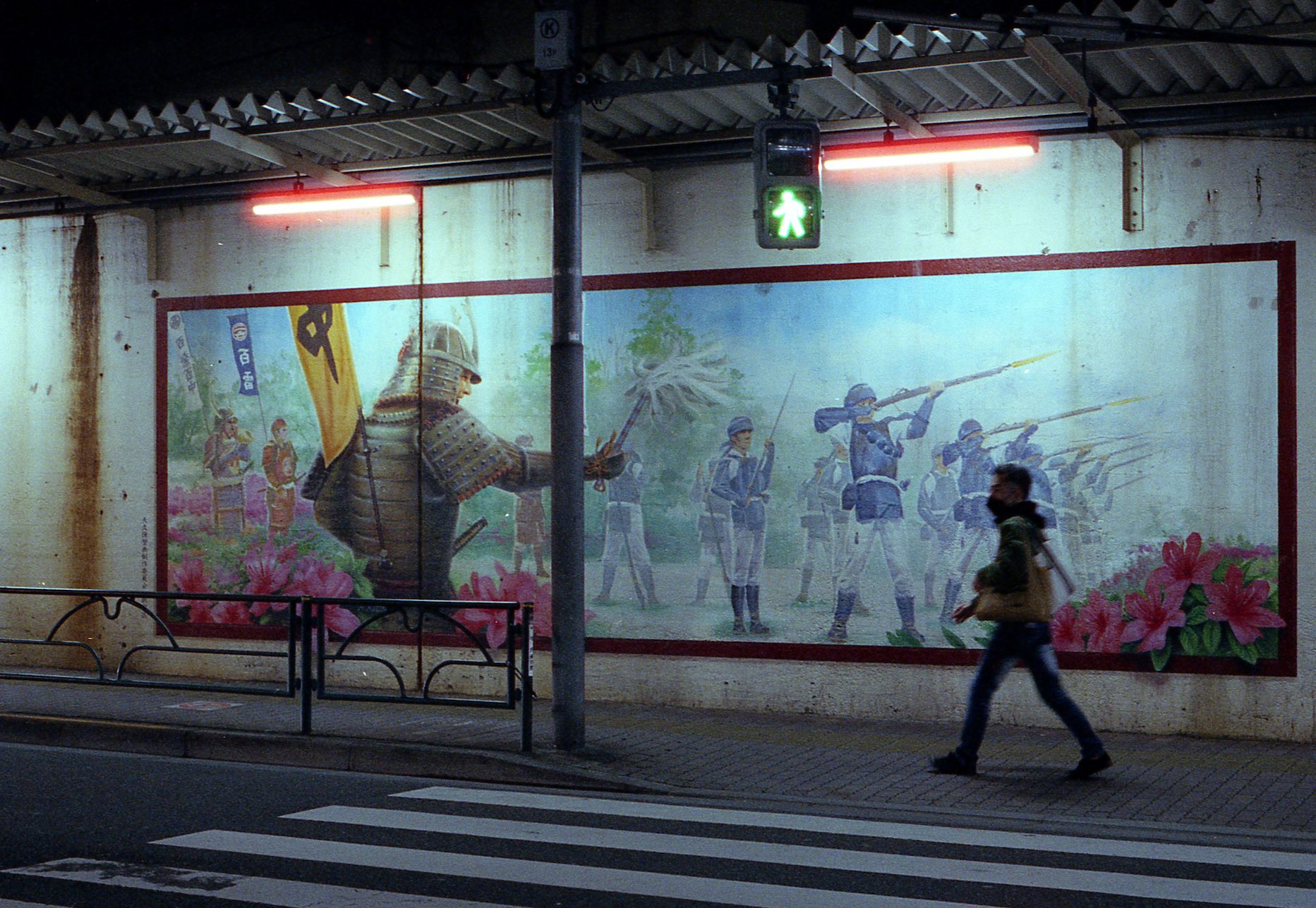
It's not always easy to tell which scenes work and which don't with this film. Sometimes a few neon tubes do the trick, sometimes you frame a shot with loads of different light sources and the halo is barely noticeable. Once an image gets too bright, the effect is simply drowned I assume. Scenes that worked best for me were such that are moderately lit (no total darkness) with a few prominent light sources, like the street crossing above or the underpass below. When everything works out, and given the right subject, you can channel proper Lost In Translation vibes with this film stock. In that sense, Shibuya and Shinjuku can certainly deliver.
Shinjuku, and particularly Kabukicho, is an area undergoing a lot of change right now. Historically known for being a rather shady part of town, full of dive bars, host clubs, and other adult entertainment, the area is being cleaned up rapidly in recent years. Today, Kabukicho is home to shopping malls, food courts, newly opened luxury hotels, and funky places like Mugi no Oto. It's quite fascinating to see how this city keeps evolving constantly. Although you can't help but feel a bit sentimental for the old, sometimes edgy but certainly unique corners of Tokyo that are lost in the process. Better preserve some of them on film before they are all gone.
